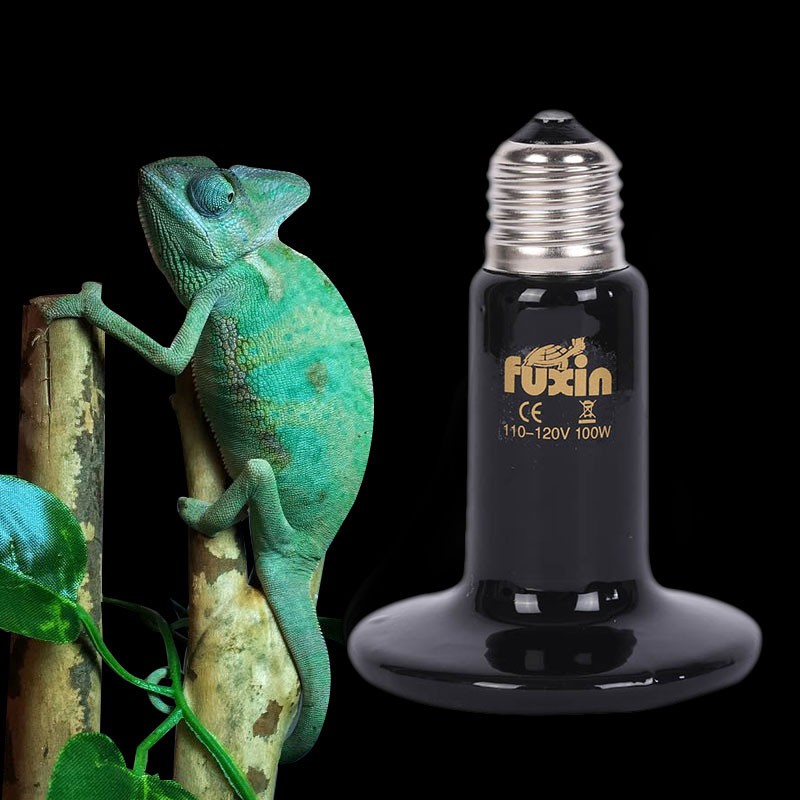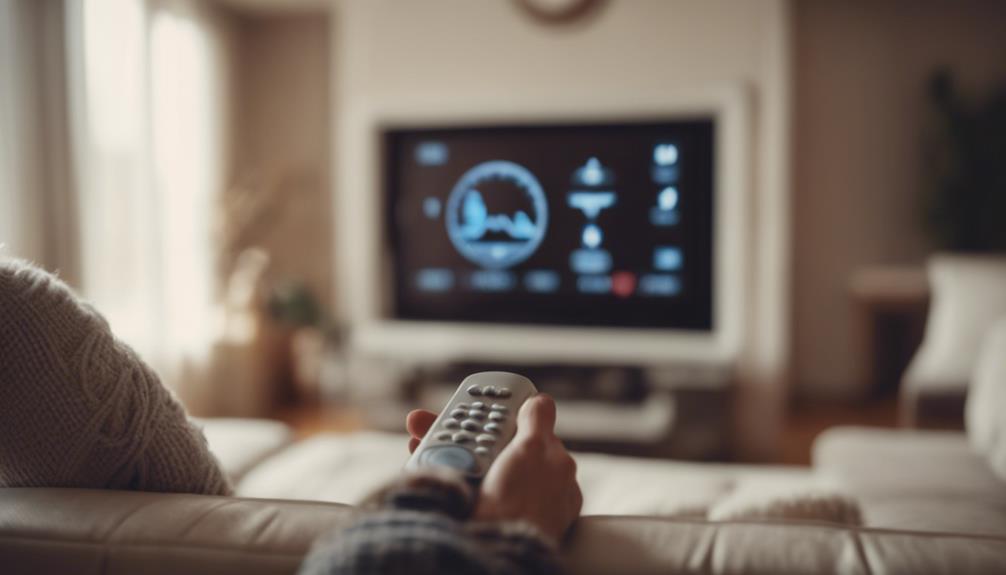
To lower your heating bills effectively, consider utilizing infrared heating technology for direct warmth and energy efficiency. Optimize the placement of heaters by ensuring even distribution and avoiding obstructions. Set your thermostat at around 68 degrees Fahrenheit and make small adjustments to save costs. Proper insulation, sealing, and regular maintenance enhance energy efficiency and system performance. Monitor your energy consumption trends and habits to identify areas for improvement. Leveraging programmable thermostat settings can contribute to reducing waste and enhancing overall efficiency. These tips offer practical ways to lower your heating bills without compromising comfort and warmth.
Understanding Infrared Heating Technology
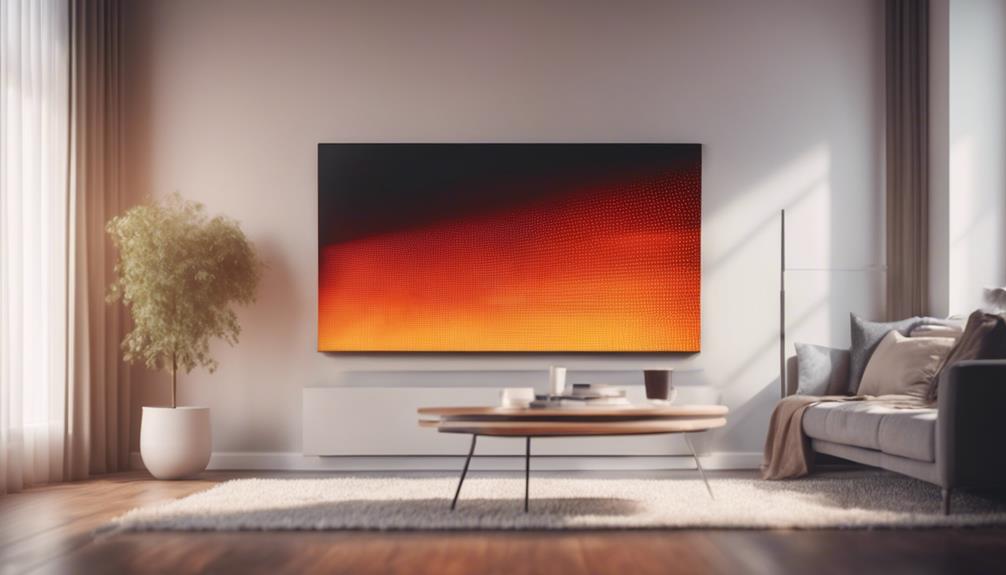
To understand infrared heating technology, you must grasp how it efficiently warms objects and people directly without heating the air in between. This method offers numerous benefits, primarily in heating efficiency.
Unlike traditional heating systems that warm the air first, infrared heaters emit rays that travel through the air and heat objects and individuals directly. This process reduces heat loss and guarantees that energy isn't wasted on heating the air or unused spaces.
Infrared heating is highly efficient because it eliminates the need to continuously heat and reheat the air in a room. Instead of waiting for the entire space to warm up, you experience instant warmth as soon as the infrared rays hit you.
This targeted approach also allows for zoning, meaning you can choose which areas to heat, saving energy by not heating unoccupied rooms. Additionally, infrared heating is beneficial for allergy sufferers as it doesn't circulate dust or other allergens in the air like traditional forced-air systems do.
Placement Tips for Infrared Heaters
Understanding the efficient nature of infrared heating technology can guide you in making ideal choices for the placement of your infrared heaters within your living space.
When considering heater positioning, it's important to place your infrared heater in a central location in the room. This guarantees that the heat is evenly distributed throughout the space, maximizing the heater's efficiency. Additionally, avoid placing the heater near objects that can obstruct the heat waves, such as furniture or curtains.
Room layout plays a significant role in determining the best placement of your infrared heater. If you have an open floor plan, position the heater in a way that allows the heat to reach all areas effectively. In contrast, for rooms with partitions or separate zones, consider using multiple heaters strategically placed to cover each section efficiently.
Setting Optimal Temperature Levels
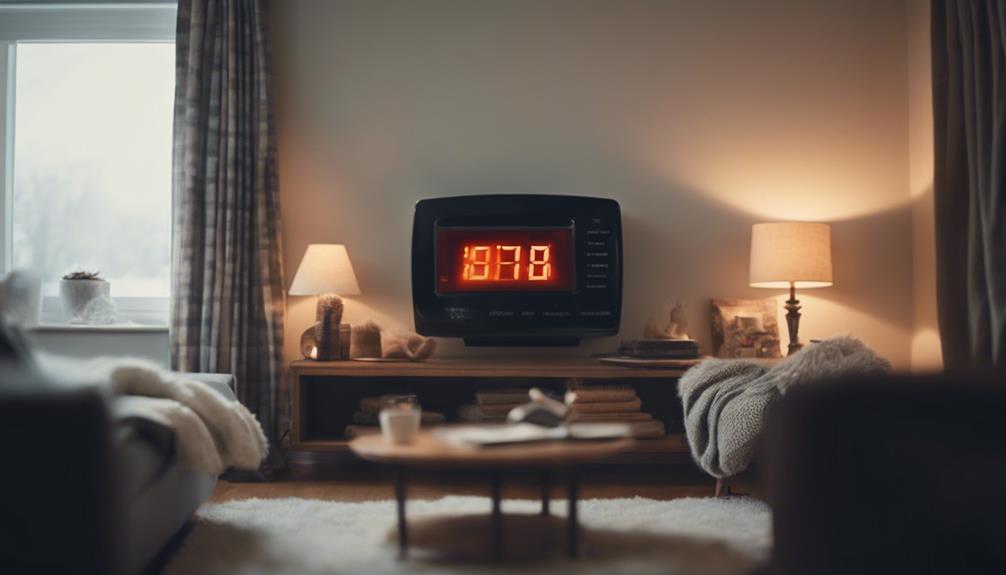
Maintaining your home at the ideal temperature setting can greatly impact your comfort level and energy costs. To maximize energy savings, it's recommended to set your thermostat to lower temperatures during the winter months when you're asleep or away from home.
Setting your thermostat to around 68°F while you're awake and lowering it when you aren't around can result in significant cost savings. For every degree you lower your thermostat during the winter, you could potentially save up to 3% on your heating bill.
Additionally, investing in a programmable thermostat can help you automate temperature adjustments based on your schedule, ensuring peak comfort when you're home while still saving on energy costs when you're not.
It's also advised to avoid cranking up the heat when you feel cold; instead, try layering clothing or using blankets to stay warm. By being mindful of your temperature settings and making small adjustments, you can achieve both comfort and energy efficiency in your home.
Proper Insulation and Sealing
Proper insulation and sealing are essential for maximizing energy efficiency and reducing heating costs in your home.
When it comes to insulation materials, consider options like fiberglass, cellulose, or foam board. Fiberglass is cost-effective and easy to install, while cellulose is environmentally friendly and offers great thermal performance. Foam board provides high insulation levels but can be pricier.
Sealing methods play an important role in preventing air leaks and maintaining a consistent temperature indoors. Use weatherstripping around doors and windows to keep cold drafts at bay.
Caulking gaps in walls, windows, and pipes can also greatly reduce heat loss. Don't forget to insulate your attic and basement properly, as these areas are common culprits for heat escape.
Regular Maintenance for Efficiency
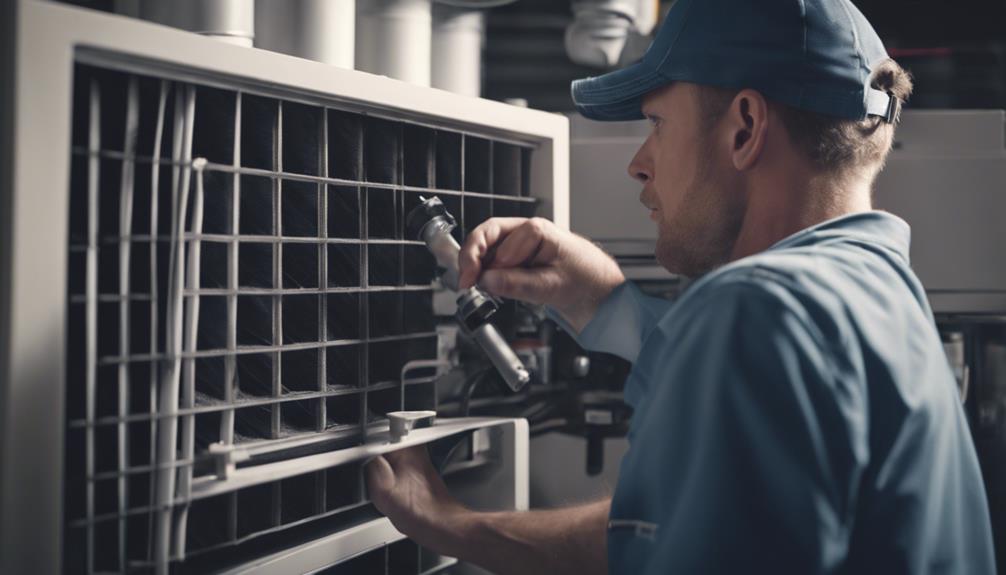
To guarantee ideal energy efficiency and cost savings, regular maintenance is key in keeping your heating system running efficiently and effectively.
One vital aspect of maintenance is scheduling regular furnace inspections. A professional inspection confirms that your furnace is operating at its best, identifying any potential issues before they become costly problems.
Additionally, regular duct cleaning is essential. Over time, dust, debris, and other contaminants can accumulate in your ductwork, reducing airflow and forcing your system to work harder to heat your home. By keeping your ducts clean, you can improve the efficiency of your heating system.
When it comes to maintenance tasks you can do yourself, don't forget to regularly change your air filters. Clogged filters restrict airflow, making your system less efficient.
Checking and replacing filters as needed can help your heating system run smoothly and save you money on your heating bills.
Monitoring Energy Consumption
Monitoring your energy consumption is essential for understanding how efficiently your heating system is operating and identifying potential areas for improvement. Start by conducting energy audits to assess your home's overall energy usage and efficiency. Energy audits can help you pinpoint areas where energy is being wasted, allowing you to make informed decisions on how to reduce consumption.
By tracking your consumption patterns, you can identify trends and anomalies that may indicate inefficiencies in your heating system. Keep a record of your energy bills and compare them over time to see if there are any sudden spikes in usage. This information can guide you in adjusting your heating habits or investing in energy-efficient upgrades.
Additionally, consider using smart devices that monitor your energy usage in real-time. These tools can provide valuable insights into your consumption habits and help you make immediate changes to reduce energy waste.
Taking Advantage of Programmable Settings
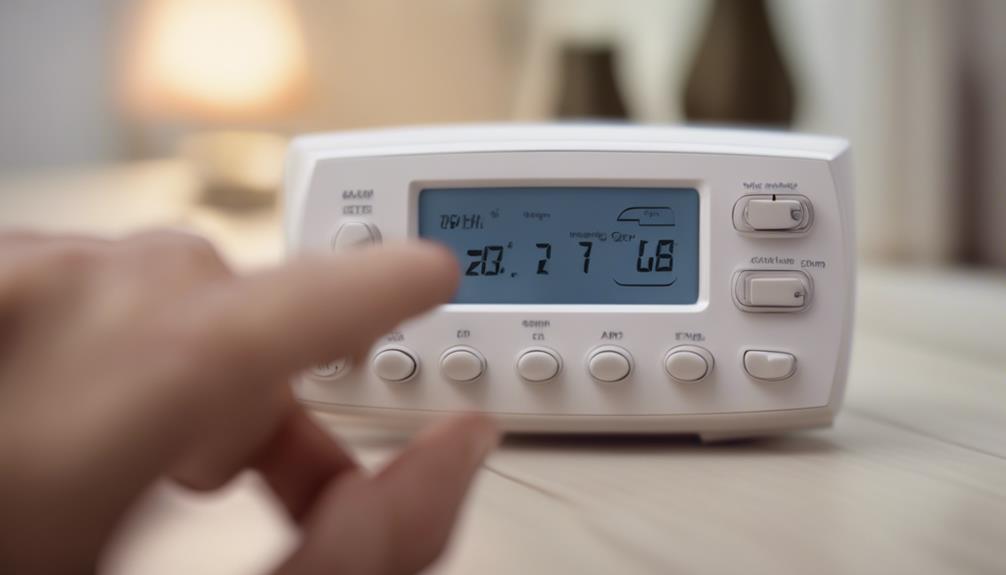
Utilize programmable settings on your thermostat to optimize your heating system's efficiency and reduce energy consumption.
Smart thermostats have the capability to create heating schedules based on your lifestyle and preferences. By programming your thermostat to lower the temperature when you're away or asleep, you can save on heating costs without sacrificing comfort. For example, setting the temperature lower during the day when you're at work and raising it before you come home can lead to significant energy savings over time.
Additionally, consider conducting an energy audit to identify areas where heat may be escaping from your home. By pairing the insights from an energy audit with your programmable thermostat settings, you can target specific areas for improvement and maximize your energy savings.
Smart thermostats can also provide data on your energy usage, allowing you to make informed decisions about your heating habits.
Incorporating programmable settings into your heating routine can lead to long-term cost savings and a more efficient use of energy. By taking advantage of the advanced features offered by smart thermostats and the insights from energy audits, you can tailor your heating system to meet your needs while reducing unnecessary energy consumption.
Conclusion
To summarize, implementing the tips mentioned above can help you lower your heating bills and increase energy efficiency in your home.
By understanding infrared heating technology, placing heaters strategically, setting ideal temperature levels, improving insulation and sealing, performing regular maintenance, monitoring energy consumption, and utilizing programmable settings, you can make a significant impact on your overall energy costs.
With these simple steps, you can stay warm and save money during the colder months.
